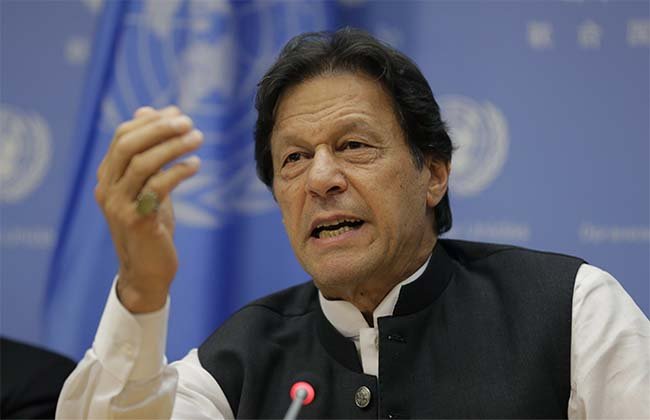By Shashanka Das
The familiar cycle of terror, retaliation, and restraint has once again played out in the subcontinent. The Pahalgam attack was brutal in its symbolism and devastating in its human toll. India’s riposte—Operation Sindoor—was swift, intense, and unequivocally public. Yet beyond the theatre of missiles and military briefings, a deeper transformation is underway, one that marks a paradigmatic shift in India’s strategic doctrine. For the first time, India appears to have stepped away from a reactive posture and entered the domain of calibrated deterrence—not merely by punishment or denial, but by exhaustion.
If deterrence by denial aims to harden defences to prevent attacks, and deterrence by punishment seeks to inflict costs after the fact, both have historically fallen short in the Indo-Pak context. Pakistan’s strategic tolerance for pain and its reliance on non-state proxies have made these models insufficient. What is now emerging is a more nuanced doctrine: to steadily, persistently, and visibly raise the cost of Pakistan’s sub-conventional strategy until it becomes unsustainable. This doctrine does not hinge on one operation or one headline; it is cumulative, patient, and relentless.
At the heart of this evolution lies India’s decision to respond with conventional force in full public view. In contrast to the covert surgical strikes of 2016 or the ambiguous messaging of Balakot in 2019, Operation Sindoor was declared with precision and intent. The retaliation was not whispered about in intelligence briefings—it was televised, translated, and tweeted. Such transparency serves a strategic function. It creates an unmistakable public record of resolve. By owning its actions, India reinforces its credibility both to domestic audiences and to adversaries. The message is simple: provocations will be met with calibrated, visible force.
The nature of escalation also carries meaning. Each Indian response since the 2001 Parliament attack has incrementally raised the stakes. Where once the Line of Control was sacrosanct, now it is traversed in the name of deterrence. Where once ambiguity prevailed, now clarity defines the response. The Pahalgam aftermath saw not just tactical military operations, but the invocation of diplomatic tools such as the suspension of the Indus Waters Treaty. By targeting critical infrastructure without breaching the nuclear threshold, India has found a space to exert pressure without courting uncontrollable escalation. The goal is not to provoke, but to impose costs—strategic, economic, and reputational.
India’s evolving approach deliberately erodes the artificial distinction Pakistan has long maintained between terrorism and formal state conflict. Historically, Pakistan has insulated itself by outsourcing violence to non-state actors while threatening nuclear escalation if India retaliated. This dichotomy is now being steadily dismantled. Terrorism is treated as a trigger for war, not as a law-and-order issue. In doing so, India asserts that it will no longer play within Pakistan’s stratified conflict framework. A single act of terrorism now carries the risk of triggering a broader military response, thereby heightening the consequences for even low-intensity provocations.
At the same time, India has shown a calibrated ability to operate below the nuclear threshold. The strikes post-Pahalgam were sharp, confined, and strategically targeted. They focused on terror launchpads and logistical nodes rather than civilian centres or deep military installations. This precision is not an accident—it reflects a conscious desire to contain conflict while signalling that India possesses escalation dominance. That is, the ability to punish without spiralling into full-scale war. It is in this twilight zone—between skirmish and war—that India is now claiming space for deterrence.
Equally notable is India’s approach to third-party mediation. Unlike in previous decades, when crises between the two nations would prompt diplomatic overtures and pressure for bilateral talks, India today is willing to accept external assistance only in logistical terms. American facilitation of the ceasefire was not permitted to morph into a discussion about Kashmir. There were no grand diplomatic summits, no photo-ops of reluctant handshakes. The message was again deliberate: India will not allow terror to become a pretext for political dialogue.
Crucially, India is now betting on a longer game—one that targets Pakistan’s strategic patience. While Pakistan may demonstrate momentary resilience, the Indian establishment appears confident that the cumulative burden of repeated retaliations—military, economic, and diplomatic—will eventually force a recalibration in Rawalpindi. A Pakistan that finds itself navigating perpetual uncertainty and mounting resource strain may begin to reassess the cost-benefit analysis of nurturing asymmetric warfare. In effect, India seeks to grind down the tolerance of its adversary, not in one decisive blow, but through sustained pressure.
The Pahalgam crisis also marked a significant realignment of the terms of bilateral engagement. By suspending the Indus Waters Treaty—a pillar of the 1960s-era diplomatic architecture—India has reframed the dialogue. No longer is the conversation anchored to the sterile rhythm of “talks on Kashmir in return for action on terror.” Instead, the stakes have been redrawn: India demands security, Pakistan seeks water. The asymmetry of interests is now matched by an asymmetry of leverage. In shifting the discourse from territory to existential resources, India has not just altered the subject but the very grammar of engagement.
Finally, India’s current trajectory signals a continuity in strategic messaging across the last decade. From the strikes in 2016 to Balakot in 2019 and now Operation Sindoor, a pattern has emerged: each act of terror will be met with a progressively more assertive response. This consistency, more than the scale of any single operation, builds the architecture of deterrence. It creates expectation, reinforces predictability, and signals resolve. Pakistan is now confronted not by an episodic India, but by a patient and purposeful one.
In the shadow play of South Asian geopolitics, deterrence is not declared—it is demonstrated. And in the theatre of post-Pahalgam diplomacy and conflict, India has demonstrated more than retaliation; it has articulated a strategy of slow, deliberate exhaustion. This may not make for dramatic headlines. But in the long arc of statecraft, it may prove to be the most enduring shift of all.
Ph:9706619975
Email id:shashankadasnov1@gmail.com












